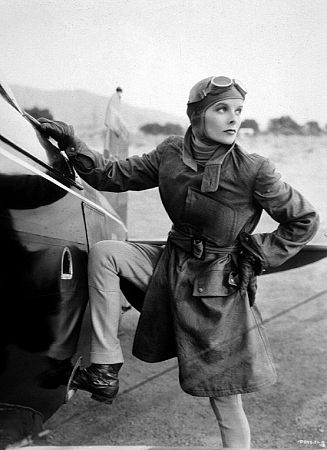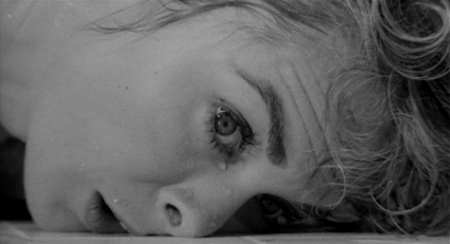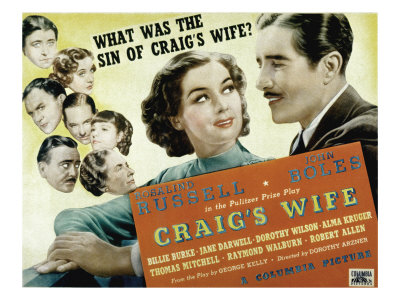Since the first biblical patriarchs wandered out of Babylonia to the Egyptian Pharoahs and through the Greek theatre of Aristophanes to modern Hollywood, the male hero has been the center of the universe. Copernicus proved “man” was not the center of the universe, but the lesson has been slow in sinking in.The Oscars are upon us, representative of male patriarchy and its own canon of immutable laws of the cultural universe with the hero-male as savior. Does there exist a separate, identifiable female, aesthetic of film. That’s not easy to find a consensus on. What is apparent is that the male gaze is the central visual narrative tool;Hollywood’s medium of exchange is the objectification of women and an embedding of this eroticization in a way that trains both men and women to accept this as the norm. Because of this unconscious acceptance of the male gaze, almost a passive complicity, these techniques have become a default position for all directors,almost in spite of their gender.

"Nowhere is the threat of sexuality more evident than in Christopher Strong, which introduces Cynthia Darrington (Katherine Hepburn in a role that would come to be her stock in trade), an independent aviatrix, as a woman over twenty-one who has never had a love affair. Her love affair with Christopher Strong is ultimately her undoing and she dies in a suicide plane crash, pregnant with his child. Arzner’s films expose that strain of the heterosexual “bargain” that “shackles” women (referred to in the dialogue of Christopher Strong where Christopher gives a bracelet to Cynthia, the bracelet appearing in a close-up as a signifier of their lovemaking). As June says in Working Girls, virginal women have to learn “to say yes and no” at the same time in order to remain unshackled to the heterosexual contract." Read More: http://www.sensesofcinema.com/2003/great-directors/arzner/ image: http://webspace.webring.com/people/sk/khahck/
In discussing the films of Dorothy Arzner, the question has moved from ‘how do her films represent a female worldview’ to ‘how do these film-texts interrogate or even disrupt the hegemonic (read: masculinist) ideology of dominant Hollywood cinema?’ Still, it is important to complicate even this question in order to avoid reducing the analysis of her films to a simple dialectic: is Arzner simply a female dupe of the studio system or a feminist rebel in a male-dominated system? Many of Arzner’s critics have taken up one side of this debate or the other (usually, the former). Different questions must be asked of Arzner’s work in order to alter the terms of such Arzner criticism. One significant question is how does Arzner appropriate the Woman-as-Image upon which dominant Hollywood cinema relies and to what effect? Read More: http://www.sensesofcinema.com/2003/great-directors/arzner/a

"Aversion therapy uses unpleasant reinforcement to a response which is undesirable. This can take the form of electric shock, exposing the subject to fear producing situations, and the infliction of pain in general. It has been used as a way of "curing" homosexuality, alcoholism and stuttering. Desensitization involves forcing the subject to view disturbing images over and over again until they no longer produce any anxiety, then moving on to more extreme images, and repeating the process over again until no anxiety is produced. Eventually, the subject becomes immune to even the most extreme images. This technique is typically used to treat people's phobias. Thus, the violence shown on T.V. could be said to have the unsystematic and unintended effect of desensitization." Scene from Psycho. Read More:http://ce399.typepad.com/weblog/operant-conditioning/
Part of the issue is, that it seems that a feminist approach, would tend to be a critic of capitalism. Hollywoood can B.S. this, obscure it and distill it into numbingly dumb entertainment. And it can castrate its critical message by diluting it into what Guy Debord termed “The Society of the Spectacle” where women’s gender issues are commodities in a larger act under the big tent. It is the trinketizing sort that Hollywood metes out for artists critical of what it represents: the military/industrial/cultural complex. This entertainment complex controls consciousness,and by the use of comic farce, it marginalizes and ridicules as outrageous, any sequence of thought that challenges its hegemony through a reminding of inevitable flaws and absurd posture in the face of reality.

---As Allan G. Johnson points out, “If you want a story about heroism, moral courage, spiritual transformation, endurance, or any of the struggles that give human life its deepest meaning, men and masculinity are usually the terms in which you must see it,” and since the vast majority of Hollywood films are about these narratives then that might explain the overabundance of stories about men’s lives.---Read More: http://www.feministfrequency.com/ image: http://www.movie-moron.com/?p=8475
Any cinema that contradicts Hollywood by exposing contradictions must be contradicted: no chance of financing and an unwritten form of blacklisting. It is labeled as a distortion. any film highlights a market based society’s dirty underwear of militarism, fear and emotional trauma and the escape of pleasure that seeks to pacify this and blame the real villains, must be prettified into meaninglessness, treated as a kind of aberrant and random glamorization of society. Put makeup on that pig! There are emotional truths bourgeois society, and Hollywood will not make films that hold a revengeful mirror up to it, a distorting mirror that discredits it by telling it is not the fair society, the “beau monde” it believes itself to be, but a reactionary apparatus that bears more than a passing resemblance to what emerged from Weimar Germany.
ADDENDUM:
http://www.articlesnatch.com/Article/Male-Domination-In-Film-Industry/1409176
The question of the male gaze (and the woman’s refusal of it) has been a particular fecund point of debate in Arzner’s films. With the emergence of Queer Film Theory, authors have used feminist revisions of Arzner’s films to expose the compulsory heterosexist strain in hegemonic feminist film theory such as the now infamous essay, “Visual Pleasure and Narrative Cinema” by Laura Mulvey. Queer film theorist Judith Mayne has been at the forefront of reclaiming Arzner’s film texts and the feminist-fetishized image of Arzner herself in order to make the point that the figure of the lesbian, particularly the butch, troubles the heterosexual presumptions underlying the male gaze….

"“Psycho”, “Apocalypse Now”, and “The Graduate” are three examples. All three of these movies have a male protagonist. Because of this, these movies often include shots that show the world from a male perspective, and as a result of this all three display some element of voyeurism. The shower scene in “Psycho”, the scene with the Playboy girls in “Apocalypse Now”, and the way Mrs. Robinson is filmed in “The Graduate” all frame the women as Mulvey describes: “woman as object the combined gaze of spectator and all the male protagonists in the film. She is isolated, glamorous, on display, sexualised.” (Mulvey p 12) The camera becomes the male gaze, and films the woman in a way that uses her as an object of the male’s perception of his world. Not one of the movies we watched showed the male characters through a female gaze." Read More: http://gandt.blogs.brynmawr.edu/web-papers/web-papers-2/its-a-mans-world-the-male-gaze-and-the-film-industry/ image: http://www.moviemarket.com/Photos/C300155_B77018.html
…Further, her argument allows for the reintroduction of desire and the exchanges of gazes between women—a much-ignored possibility in the pantheon of feminist film theory. It also challenges the assumptions, stated above, concerning Arzner’s own appropriation of masculine drag. When Laura Mulvey casts the female spectator as a form of “transvestism”, Arzner’s unique position as a female director dressed in male drag stands in sharp contrast to the essentialist, heterosexist presuppositions built into the concept of the “male gaze”. Read More: http://www.sensesofcinema.com/2003/great-directors/arzner/
http://screen.oxfordjournals.org/content/49/4/391.abstract a

"For much of Arzner’s work, sexuality stands as a threat to women’s community. Women, in the heterosexual contract, must play their part, as opposed to the more “honest’ form of love between women. To this extent, Harriet is often seen posing for Walter, especially in the shrine of her living room. Surrounded by classical Greek sculptures, the pivotal scene shows Harriet posed by the mantle, draped in a white toga-like dress with gold details. She appears the Vestal Virgin guarding the hearth. This image stands as a motif for Arzner; many of her films use the trope of virginity as that which allows women’s community to thrive—the sisters in Working Girls before May becomes pregnant, or, in The Wild Party, the bond between Helen and Stella, before Stella mistakenly climbs into Gil’s berth. " Read More: http://www.sensesofcinema.com/2003/great-directors/arzner/ image: http://dawnschickflicks.blogspot.com/2010/10/rosalind-russell.html
*Male Subjectivity includes extensive discussions of Henry James, Marcel Proust, and T. E. Lawrence. However, its primary focus rests on the visual, namely cinematic representations of masculinity in both classic Hollywood cinema, such as It’s a Wonderful Life (1946) and The Best Years of Our Lives (1946), and the less conventional cinema of Rainer Werner Fassbinder. Throughout the book, Silverman challenges “the dominant fiction” of an ideology of “unimpaired masculinity” . While in The Acoustic Mirror she observes that “classic cinema” promotes a disparity between “woman’s lack, specularity, and (diegetic) containment” as opposed to male “potency, vision, and (diegetic) exteriority” , in Male Subjectivity Silverman goes beyond this dichotomy of visual images of men and women to problematize the whole issue of visual representation in cinema, suggesting that cinematic representations of male and female subjectivities evoke and suggest their own negations and contradictions. She states that cinematic “visual articulation” contains potential radical reversals: the impossibility of ever fully owning the gaze or escaping specularity within a particular scopic regime destabilizes the visual and subverts obdurate masculine authority. Duplicity and multiplicity automatically exist in every subject and object, thereby denaturalizing the “alignment of masculinity with the gaze” . Power, Silverman argues, can “invade the spectacle and disinvest from the gaze,” and spectacle also can operate “phallically” . Thus, the “ideological grid of the screen” can be manipulated so that “subjects are not only constituted but differentiated in relation to class, race, sexuality, age, and nationality” .Read More:http://www.freepatentsonline.com/article/College-Literature/16408684.html
——————————————————–
Guy Debord: The alienation of the spectator, which reinforces the contemplated objects that result from his own unconscious activity, works like this: The more he contemplates, the less he lives; the more he identifies with the dominant images of need, the less he understands his own life and his own desires. The spectacle’s estrangement from the acting subject is expressed by the fact that the individual’s gestures are no longer his own; they are the gestures of someone else who represents them to him. The spectator does not feel at home anywhere, because the spectacle is everywhere.
Workers do not produce themselves, they produce a power independent of themselves. The success of this production, the abundance it generates, is experienced by the producers as an abundance of dispossession. As their alienated products accumulate, all time and space become foreign to them. The spectacle is the map of this new world, a map that is identical to the territory it represents. The forces that have escaped us display themselves to us in all their power.
The spectacle’s social function is the concrete manufacture of alienation. Economic expansion consists primarily of the expansion of this particular sector of industrial production. The “growth” generated by an economy developing for its own sake can be nothing other than a growth of the very alienation that was at its origin. Read More: http://www.bopsecrets.org/SI/debord/1.htm






 COMMENTS
COMMENTS